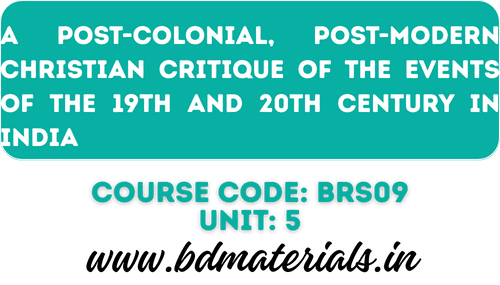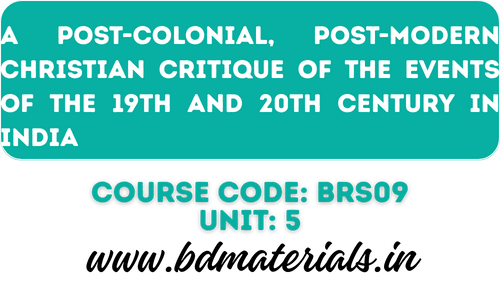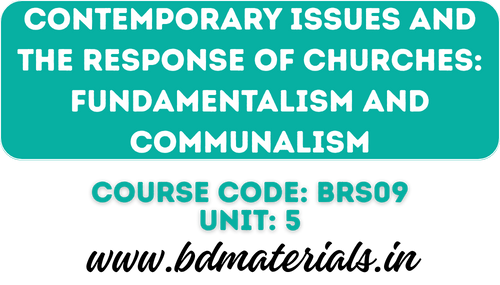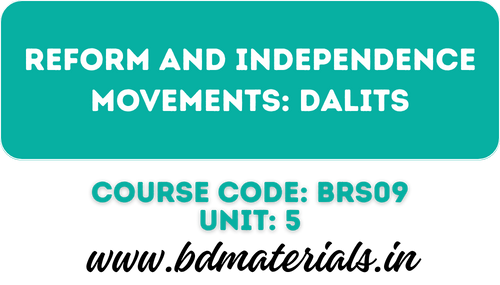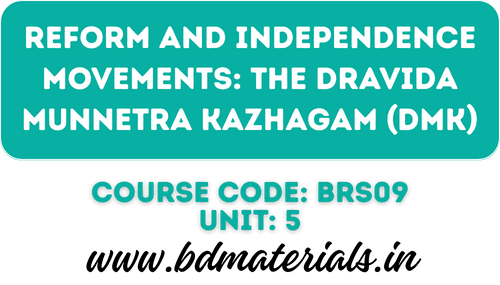SINGH SABHA MOVEMENT
The Origin and Development of Sikhism: The Ten Gurus who lived in Punjab during 16th and 17th centuries were the contributors to the origin and development of Sikhism as a new religion in India. They preached a synthesis of both Hinduism and Islam. They had religious fervor, and were dynamic in activity, as well as having organizing ability. Guru Nanak was the first who studied the writings of Farid, Kabir, Ramananda and Namdev and identified common things between Islam and Hinduism. Nanak opposed the fanaticism and intolerance of the Muslims, as well as the meaningless rituals and discrimination of caste and sex of the Hindus. Nanak stood as the symbol of religious harmony between Hindus and Muslims in India. He preached the people that if they wanted to love God, they must love others.
After the tenth Guru- Gobind Singh there were no more gurus but the scripture known as the Guru Granth Sahib written in “Gurumukhi” took the place of gurus’ leadership. This scripture was the compilation of both Hindu and Muslim writings. Moghal emperors executed the fifth Guru Arjun and ninth Guru Tejh Bahadur. Due to such treatments, Sikhs became militant from the time of Guru Gobind Singh who started the “Khalsa”. The Sikhs believe in one God without form and oppose idolatry. The name of God most current among them is “Wah Guru” (wondrous teacher). They believe in a casteless brotherhood of man. It is much closer to Islam than to Hinduism. All the ten Gurus were from Kshatriya caste, hence, they never free themselves fully form Hindu customs. There was re-emergence of caste system among them and abstain from eating beef and are zealous in protecting the cow.
After the death of the final guru, Hindu ceremonies and rituals like wearing of caste marks, Hindu customs at birth, weddings and funerals came back into Sikh Gurudwaras. The Moghal emperors continued to persecute the Sikhs, and their Gurudwaras (temples) came into the control of Brahmin priests who neglected Sikh religious duties, lived in licentiousness and luxury and were doing things that were contrary to the character of Sikhism. Extravagant ceremonies were substituted in the place of the simple form of the Sikh service. These priests had also converted properties attached to the Gurudwaras into private property.
SINGH SABHA MOVEMENT:
The Sikhs were facing an identity crisis. Many Sikhs have lost their distinctive identity through the adulteration of Hindu way of life. The Singh Sabha Movement was an attempt to get rid of the adulterations and accretions that has spoilt Sikhism in the previous period. It was a mass movement and an attempt to bring back to the original purity of the faith. This movement restored the original identity of Sikhs by rejecting what was against the teachings of ten gurus. British government supported rites and doctrines of Sikh faith. Reformation of Sikh shrines took place: There were cultural and political aspirations; literacy and educational changes also came about. This movement made Sikhism as a living religion once again.
This movement was also a reaction against Christian missionary work. The challenge of Western science, Christian ethics and their social services like educational and medical, and humanitarian values resulted in self-examination and some Sikhs were converted to Christianity. In 1853, Maharaja Duleep Singh (the last Sikh ruler of the Punjab) accepted the Christian faith and made liberal donations for Christian charity and for the Mission to set up a station in his capital and released funds for its maintenance. The Gospel of Jesus was preached in the neighbourhood of the Golden Temple of the Sikh at Amritsar.
Four Sikh students of the Amritsar Christian Mission School declared their intention to follow Christ. This alarmed the Sikh community and organized a meeting to discuss this matter seriously. On October 1st, 1873 an association called “Sri Guru Singh Sabha” was formed. The objectives were:
- to restore Sikhism to its original purity,
- to edit and publish historical and religious books for the Sikhs,
- to start magazines and newspapers in Punjabi language and propagate current knowledge through Punjabi medium,
- to reform and bring back into the Sikh- fold the original thrust for religion,
- to create interest of highly placed English men in the educational programs of the Sikhs.
The Singh Sabha brought about a regeneration of Sikh society. It gained quick support of various sections of the community. Many Sikh scholars and leaders joined the movement. By maintaining both the revivalist impulse and progressive concern the Singh Sabha movement rejected non-Sikh customs and social evils, but encouraged Western education. The Singh Sabha was established in the village of Bhasaur in Amritsar. They rejected castes and other Brahmanical customs. Though there was opposition to the Singh Sabha Movement at the beginning, but gradually the opposition was overcome and the movement reached is zenith in a large Sikh convention held on June 14th, 1903 at the village of Bekapur in Jullundar District. A Muslim man Karim Bakhsh and his four children were converted to Sikhism and his son Matab Singh founded a Society called Khals Baradar who played a pioneer role in reforming Sikh sacred places.
Dr. Jai Singh established a Shuddhi Sabha in Lahore on April 17th, 1883 with the object of reclaiming those Sikhs and Hindus who had apostatized break faith themselves by contracting alliances with Muslims. Singh Sabhas established in many places of Punjab. To co-ordinate the work of Singh Sabhas, a joint board called in “General Sabha” was formed. Later, this was replaced by the “Khalsa-Diwan” set up in Amritsar in 1883, which became the officiating center of all Sabhas. But there were differences between the Amritsar and Lahore Sabhas that led to a separate Khalsa-Diwan established at Lahore in 1886. Sikh recognized the need of central organization to unite the different sections and finally on August 19th, 1902 it was decided to set up the Chief Khalsa-Diwan-Prabahndak-Committee. The first session was held at Amritsar on October 30th 1902 and twenty nine Singh Sabhas were affiliated.
EDUCATIONAL:
Along with the revivalist impulse, the Sikhs were looking to the future as well. They had a desire for Western style of education. They wanted their share of government employment and intellectual progress. So they established schools and colleges for their children. Until the coming of the British, the educational system in Punjab had been essentially religion-based. It is a Sikh obligation, as the disciple of learner, to read the Guru Granth, especially the Japji of Guru Nanak. In Ranjit Singh’s time, he wanted to open an English school, in his life time. The British government opened secular schools, which are neutral in religious matters and English Schools for higher-grade studies. Christian Missionary Organizations also opened schools. Singh Sabha opened schools to provide western style of education and encouraged students to learn Sikhism particularly and Punjab language.
Government opened a College at Lahore and appointed Dr. Gottlied Wilhelm Leitner as the principal who founded the Anjuman-i-Punjab in 1865 for developing literature in Indian languages. They also started an oriental school and were also instrumental in the establishment of the Punjab University College in 1870 that assigned to promote study of European science through vernacular medium, as well as Eastern classical languages. The Punjabi studies gained admittance into the university curriculum, Sir James Lyall, the governor of Punjab laid the foundation stone of the Khalsa College in Amritsar on March 5th 1892 and middle school classes started in 1893.
Influence on Youth:
Singh Sabha stimulated Sikh youth to assemble for religious discussions. Young people formed the Khalsa Vidyarthi Sabha (Sikh students Club) and used to gather every Saturday. The Golden Temple management did not appreciate the enthusiasm of the Khalsa Vidyarthi Sabha due to their relation with Singh Sabha. There were some differences between Singh Sabhas.
Sikh Education Conference:
It was founded in 1908 with the following objectives:
- to spread of western education among the Skihs;
- to promote the study of Sikh literature;
- to improve Sikh educational institutions;
- to open new educational institutions;
- to encourage female education;
- to promote technical and agricultural education.
It was resolved, in the first session of the conference, that all Sikhs should pay one tenth of their income for educational progress of their community. Gurumuki and Punjabi schools were started all over Punjab along with separate schools for women. Printing press was set up and The Guru Granth was translated into English and printed in 1909 as well as printing of books, magazines and newspapers continued.
Evaluation:
The Singh Sabha Movement became a great regenerating force for the Sikhs. It opened for the Sikh community the doors of modern progress and rescued the Sikhs form the degenerating practices of Hinduism and brought them to an awareness of the excellence of their religion.
Friendly Note
Bachelor of Divinity Materials is your go-to resource for comprehensive Biblical studies, supporting students in Bachelor of Divinity (B.D.) and other theological courses. Our platform offers access to the full syllabus, detailed answers, and a vast collection of assignments, study guides, articles, and research papers to help you excel academically.
We provide downloadable PDFs of study materials, including books and journals, for convenient learning anytime, anywhere. Whether preparing for exams or conducting research, our resources cater to both students and scholars in biblical studies.
Committed to empowering theological learners, we aim to deliver high-quality, authentic study materials. Explore Bachelor of Divinity Materials to deepen your understanding of God’s Word and Christian doctrine, making it a valuable resource for aspiring ministers and anyone dedicated to theology.

